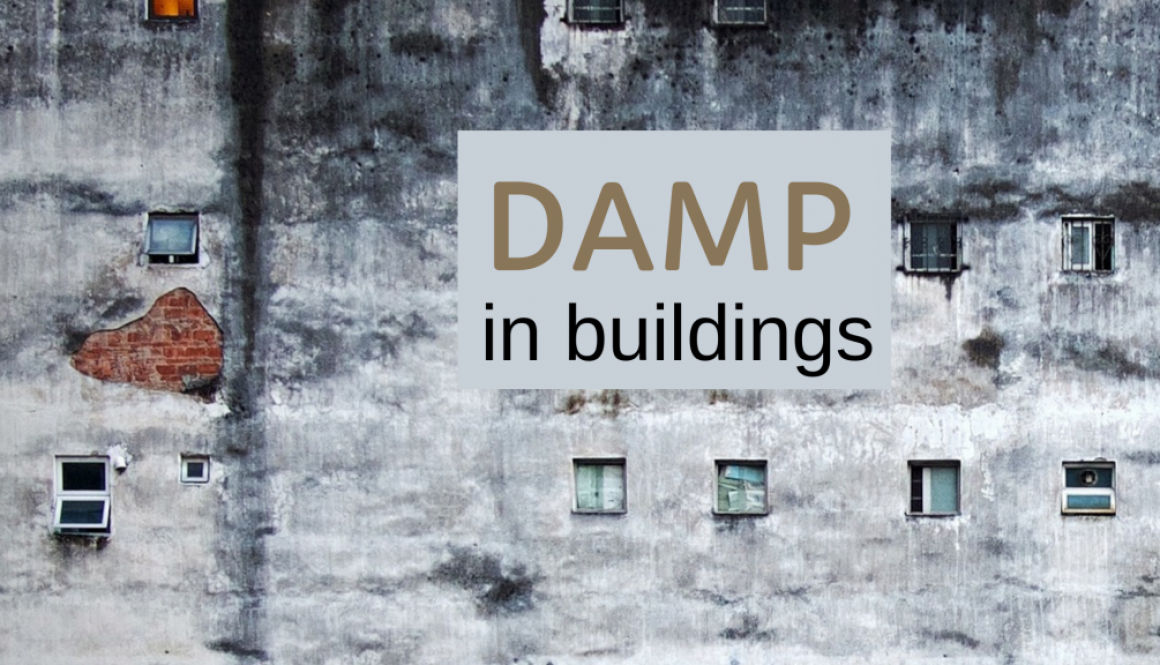PROBLEMS WITH DAMP
All buildings have acceptable levels of humidity, but any excess moisture in the structure of a building will eventually lead to damp. Property owners need to be able to recognise signs of damp and put measures in place to prevent it from occurring in the first place.
IS CONDENSATION THE SAME AS DAMP?
Condensation isn’t the same as damp. Condensation begins its journey as water vapour which is given off by people when they breathe, or by plants, or through steam from kitchens and bathrooms. Water vapour at this stage, invisible and in the air around you, isn’t a cause for concern.
When the moisture hits a cold surface, like a window, it drops in temperature and releases its water content. You might notice droplets of water around windows and at the corners of ceilings and behind wardrobes. You might also be aware of an unpleasant odour inside the affected parts of your property. This is condensation; if it isn’t wiped away it can attract spores of black mould. When black mould releases mycotoxins, it can have serious health implications.
WHAT IS RISING DAMP?
Rising damp is sometimes mistaken for condensation when it attracts stachybotrys spores and appears as black mould. However, the causes are very different and the source emanates from the ground floor of a building. When bricks and masonry walls are laid on wet ground, and the ground remains wet, the bricks will absorb water from below. This excess water will rise upwards through the floor and up walls to just over a metre high.
Aside from patches of black mould above skirting boards, another telltale sign of rising damp is flaky skirting boards. Other internal signs to look out for are white, flaky, blistering patches on plastered walls. You might also notice a tide mark on the bricks of your exterior walls.
PENETRATING DAMP
Unlike rising damp, this problem is caused by excess moisture that has entered from outside the building (not from the soil below). Penetrating damp, or lateral damp as it is also known, usually occurs in older or cement rendered buildings. Structural damage allows water to penetrate a property through aged or damaged bricks and crumbling mortar. Unwanted water can also enter from leaking pipes and overflowing gutters.
If penetrating damp is affecting your property, the ingress of water will travel horizontally. Therefore, inside a building, you can recognise it as a watermark on a wall that appears not to start at floor level. During periods of heavy rain, these discoloured patches will be more prominent with, perhaps, the appearance of water droplets on the surface of the patch. Mould growth is not always associated with penetrating damp, but musty smells can be identified and wood rot is likely to occur.
DO YOU NEED A DAMP SURVEY?
There are strategies and solutions that you can use to eliminate condensation and damp. Such measures include improving ventilation and using a dehumidifier to tackle condensation. Additionally, you might need to install effective damp proofing or rectify structural defects to protect your property. Not all measures will be successful, so it’s worth thinking about requesting a damp survey to identify causes and remedies that you might not be aware of.
Aesthetic and structural damage aside, you may have health concerns that prompt you to take professional measures against the effects of damp and condensation. After all, the inhalation of damp spores can lead to asthma and other respiratory issues. As such, it’s worth considering having a damp survey carried out. A qualified surveyor should have a CSRT (Certificate in Remedial Treatment) or a CRDS (Certificate in Remedial Damp Surveying). If in doubt, why not give Laytoe a call? We work with approved damp surveyors who will advise you on the best course of action to take.

